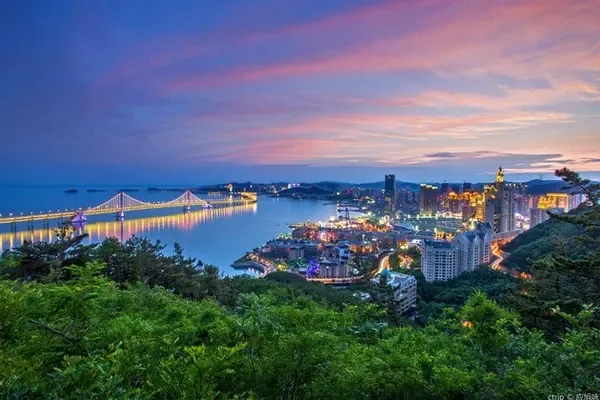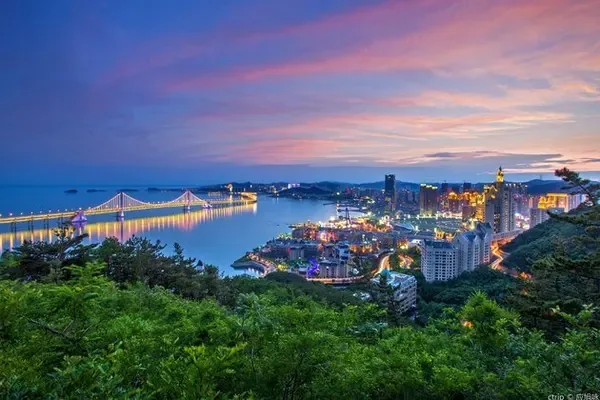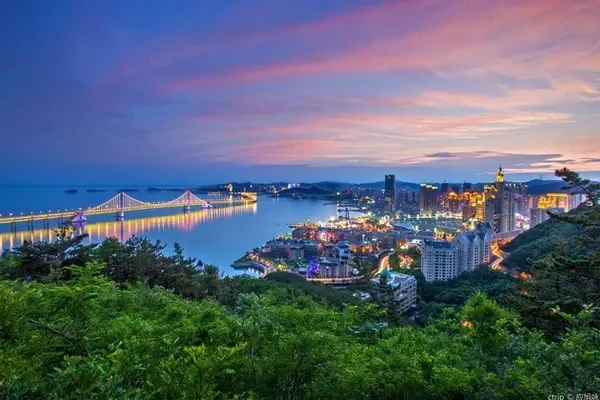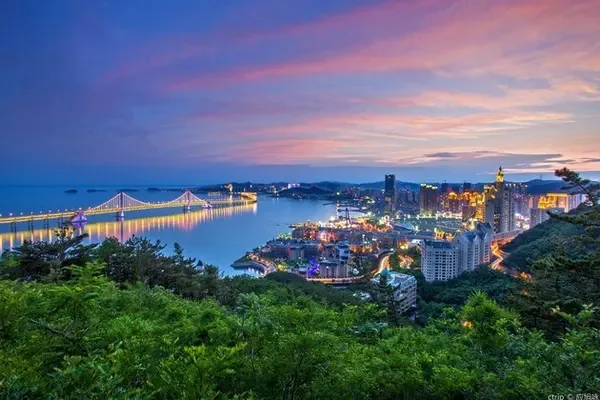"In the desert and Gobi, Populus euphratica raises torches to light up the desolate frontier." This is the imprint of Populus euphratica engraved in the heart of a young man. Looking at Populus euphratica in Xinjiang has become a longing like water. At the end of October, when I accidentally saw the picture of Populus euphratica in Xinjiang on CCTV, I was very excited and shocked. I immediately booked products and air tickets from Ctrip. I departed from Urumqi on November 9, and started a popular "saying" among young people. Go and go" trip to southern Xinjiang.
The Tianshan Mountains divide Xinjiang into two major parts, the north and the south. It is customary to call the south of the Tianshan Mountains the Southern Xinjiang and the north of the Tianshan Mountains the Northern Xinjiang. Between the northernmost Altai Mountains and the Tianshan Mountains is the Junggar Basin, and between the Tianshan Mountains and the southernmost Kunlun Mountains is the Tarim Basin. "Three mountains with two basins" is the main geographical feature of Xinjiang. In the eyes of tourists, southern Xinjiang is completely different from northern Xinjiang. Northern Xinjiang means mountains and grasslands, Kazakhs and Oirat Mongolia; southern Xinjiang means deserts and Gobi, Uyghurs and Tajiks. Korla, Luntai, Wensu, Aksu, Hotan, Zepu, Kashgar and Taxkorgan experienced in the itinerary on the 11th and 10 nights are all distributed in southern Xinjiang, and the Tarim Basin, Wensu Grand Canyon, Taklamakan Desert, Pamirs and Populus euphratica forests are all visited. It is the most magnificent poem in the natural landscape of southern Xinjiang.
Probably because of the season and climate, there were only 3 people who were lucky enough to travel with us. Mr. Si Daoma is a Hui nationality, a national second-level athlete. After resigning from public office, he pursued a freelance career he yearned for. He lived an active and kind life. He drove his own car and traveled 3,500 kilometers one way. He also accompanied us into canyons, snow-capped mountains, and scenic spots. Travel friend Xiao Lai grew up in Ganzhou, studied in Zhenjiang, and developed in Guangzhou. He is busy with work, and his annual leave has been postponed until he can no longer postpone it to travel to Xinjiang. He is the youngest, promising, and we call him the chairman, the talk storm of our long trek. Director Ma has been nicknamed the "Three Musketeers" until a traffic checkpoint. When we were about to get off the car and pass through the pedestrian passage, the young Uighur policeman pointed at Xiao Lai and said, "You want it, the old man doesn't want it", and the "Three Musketeers" became history.
Populus euphratica in China looks at Xinjiang, and Populus euphratica in Xinjiang is in southern Xinjiang. Populus euphratica in southern Xinjiang extends from Korla, Luntai, Wensu, Aksu, Hotan, and Zepu to Kashgar and the Pamirs at the end of the desert. There are forests of Populus euphratica in the wetlands of rivers and lakes, and Populus euphratica stands proudly in the Gobi desert. Populus euphratica in Xinjiang is especially concentrated and spectacular in the villages of the Rob people, Tarim Populus euphratica Forest National Forest Park and Jinhu Populus euphratica National Forest Park. Departing from Urumqi at 7:30 am on the 10th, the car traveled 550 kilometers and took about 8 hours. The first stop of the visit was the village of the Rob people.
The Lop people are one of the oldest ethnic groups in Xinjiang. They came from the remote Lop Nur. In the isolated desert, they used poplar euphratica as a boat, fish as food, and lived on fishing and hunting. Wetlands and primitive Populus euphratica forest thrive and live like primitive tribes. Here, the Taklimakan Desert stretches as far as the eye can see, the Tarim River and the Weigan River complement each other, and the largest inland river collides with the largest desert to create a dreamlike world, deserts, rivers, grasslands, lakes, Populus euphratica, Robe villages...
The Luobu village is located 85 kilometers south of Korla City. There are more than 20 households, and there is only one tourist road in and out. Stepping into the village, the main entrance is a fish totem, and standing on the left and right sides are men and women who symbolize reproduction. The Luobu people believe that fish are the ancestors of human beings, the male root is full of vitality, and the female reproductive endows a sense of sanctity. They advocate love and remain steadfast. The village replicated the relics of Sun Tomb and Xingdi Rock Painting of the Wheel of Destiny, and built suspension bridges, wooden houses, tea gardens, promenades, folk houses and the Oldeke Memorial Hall. Oldeke is the most famous Rob people in history. As the guide of Swedish explorer Sven Hedin, he successively led scientific expeditions to discover the ancient city of Loulan and Xiaohe cemetery, which shocked the whole world.
The most striking thing about the villages of the Rob people is the primitive Populus euphratica forests that grow freely and have different postures on the banks of the two rivers and the wetlands. Some of them stand out of the water, some grow near the water, some are vigorous, some are beautiful, some stand upright like a century-old pagoda, and some are charming and charming like a young woman. One night of autumn wind, the Populus euphratica forest seemed to be dyed golden yellow like an oil painting. In early winter, the color was more intense. Every leaf was plated with gold, like yellow satin. Under the blue sky and white clouds, it was dazzling and dazzling. We shuttled through the Populus euphratica forest, breathing freely, and taking pictures with ecstasy. At sunset, the sky sprayed out colorful clouds, and the whole village was shrouded in intoxicating gold. Sunsets, rivers, Populus euphratica, and villages have become poems in people's hearts and paintings in dreams.
Populus euphratica in southern Xinjiang, Luntai is the hometown. If you don't go to Luntai, you don't know the magnificence of Populus euphratica, and if you don't see Populus euphratica, you don't know the glory of life. Tarim Populus euphratica National Forest Park is located 70 kilometers south of the desert road in Luntai County, at the core of the Tarim Reserve, with a total area of 100 square kilometers. The original Populus euphratica forest in the Tarim River Basin is one of the six primeval forests in my country, and more than 90% of the Populus euphratica forest in my country is concentrated, while the Populus euphratica forest in the lower reaches of the Tarim River is known as the oldest, largest and most complete original Populus euphratica forest in the world. Departing from Korla at 9 am on the 11th, it took more than 4 hours and drove nearly 300 kilometers to the Tarim Populus euphratica National Forest Park.
It is beautiful and delicious. When I arrived at the scenic spot before 2 pm, I couldn't wait to eat and couldn't wait to enter the park to visit. We took the scenic bus, along the winding sightseeing road, all the way to see, sometimes get on the bus and drive fast, sometimes get off on foot, the whole journey is 40 kilometers, and it takes more than 3 minutes. In the scenic area, Populus euphratica, red willows, and reeds are intertwined, Qiayang River flows through, and pocket lakes are scattered among them. Beside the road and the bank of the river, there are vicissitudes everywhere. . Under the deep sky, heroes in armor stand tall in the desert or take root in the water. With their persistent lives, they help each other and build an indestructible city wall on the edge of the Taklamakan Desert. Walking through the boundless golden ocean, apart from marveling and singing, there is awe of life.
In the vast Kunlun on the border outside the Great Wall, thousands of trickles of snow water spew out from the glaciers and snowfields, forming the winding and endless Yarkand River. The Yarkant River surges and rushes down thousands of miles. It has alluvially bred a magical oasis in the vast and infinite continuous desert and the vast Gobi wilderness. It is called "Boskamu" in Uighur and "Zepu" in Chinese. The first national 5A-level tourist attraction in southern Xinjiang, Jinhuyang National Forest Park is located on the upper edge of the alluvial fan of the Yarkand River. The natural Populus euphratica forest covers an area of 18,000 mu. The scenic spot is located at the northern foot of Kunlun Mountain, where the Yarkant River exits the mountain pass, exits Kunlun in the south, and cultivates an oasis in the north. Populus euphratica enjoys Kunlun snow all the year round and looks graceful.
Get up at 6 o'clock in the morning on the 14th, and walk 8 kilometers along Tunken East Road, Tunken Road, Tanaiyi South Road and Beijing West Road in Hotan. Departure, drive more than 330 kilometers, and it takes 5 hours to arrive at Jinhuyang National Forest Park. Along the way, red dates hung with branches and fallen leaves waiting to be picked are overwhelming and quite attractive. It's amazing to say that as a person with hyperglycemia, I usually eat a little late, sweat profusely, and my hands tremble. During this trip to southern Xinjiang, I basically had two meals a day, morning and evening. Even if I didn’t eat lunch, I didn’t feel too hungry to walk or developed habitual symptoms. It turns out that beauty can also satisfy one's hunger.
As soon as you arrive at 2 o'clock in the afternoon, you will immediately enter the park for a tour. Ascending the heights, Jinhuyang National Forest Park is surrounded by the Gobi and snow-capped mountains, surrounded by the Yarkant River and its branches, facing water on three sides, and the lush natural Populus euphratica forest and the barren Gobi Desert form a unique natural feature. The yellow leaves of the Populus euphratica forest are as dyed, stretching as far as the eye can see, like a poem and a painting. The golden Populus euphratica contrasts with the clear lake water, hence the name Populus euphratica. There are battery cars and horse-drawn carriages for sightseeing in the park. We leave the cars and save the horses. The driver is a Uyghur elder, 91 years old, hale and hearty, and he is in good spirits. When many tourists rush to take pictures with him, he always smiles Ju, to your satisfaction.
About 200 meters to the northeast of the forest farm, there is a male Populus euphratica with a diameter of 3.8 meters. It has a growth history of 1,400 years. Its age is long, its trunk is stalwart, and its life is vigorous, which is rare in the Yarkand River Basin and even in the Northwest China. The tenacity and indomitable quality make it stand tall after thousands of years of wind and rain; the tenacious and unyielding spirit makes it flourish after a long period of time, which confirms that Populus euphratica "is born for a thousand years and never dies, and dies for a thousand years without falling." The legend of "falling down and being immortal for thousands of years" is honored as "King Populus euphratica" by the local people. In fact, no matter in Jinhuyang National Forest Park, Tarim National Forest Park, or in the villages of the Populus euphratica forest, there are hundreds or even hundreds of years of Populus euphratica everywhere.
If the Populus euphratica growing in the water source is not surprising, the vast Gobi desert, the canyon where no grass grows, and a few Populus euphratica standing abruptly will definitely be thrilling and overjoyed. Wensu Grand Canyon, located at the southern foot of the Tianshan Mountains, has towering cliffs, towering peaks, various poses and different shapes, and weird jaggedness. There are two Populus euphratica trees at the entrance and exit of the canyon, which are close at hand but cannot meet each other. My elder brother fell asleep while waiting. Crossing the Ahe Desert Highway in the "Sea of Death", "thousands of mountains and birds fly away, and thousands of trails and people disappear". Occasionally, we only see Populus euphratica showing us the miracle of life on the sand piles. It has become an eternal statue in the desert, bearing the wind, sword, and frost of the desert alone, and persistently pursuing the longing for life with unrepentant watch.
Some of the Populus euphratica growing in the Gobi Desert are tall and straight, some are bent under pressure, and some are prostrate and look back. They are only accompanied by salt and alkali, not green. Careful observation shows that Populus euphratica has a thick trunk to withstand wind and sand, and a small canopy to prevent high temperature evaporation. Only the root system is well developed, and as long as the groundwater level is not lower than four meters, it can survive and grow. Strange, ancient, and vicissitudes should be the simplest summary of the "living fossil" Populus euphratica. The most valuable thing about Populus euphratica is that they dedicate the most beautiful "Huyang Huang" to the earth before the leaves fall. Even after the leaves fall, they lie quietly under the tree, waiting for the wind to blow the sand and bury themselves beside their mother.
New Shaanxi winter trip diary 2 2019.11.26 in Zhuhai























































